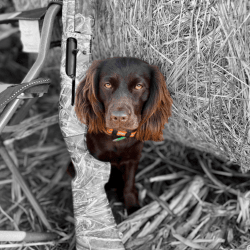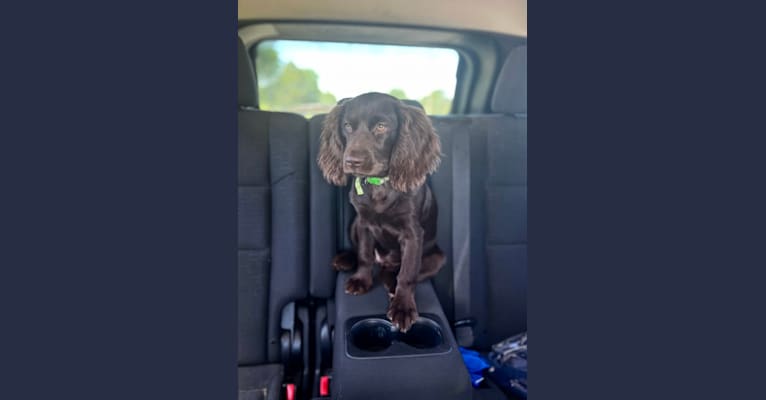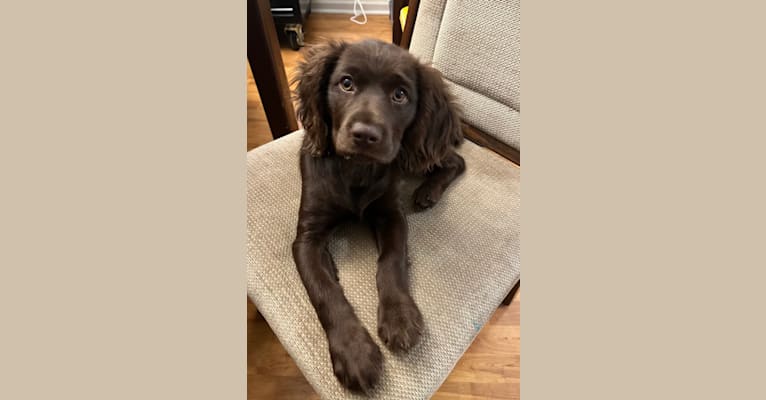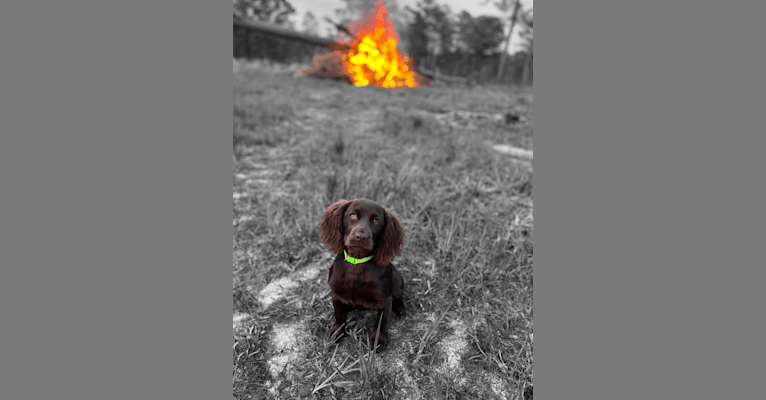Fey inherited one copy of the variant we tested
No Dogs Available
It looks like you don’t have any dogs on your account yet. Activate a kit now!
“Fey joined the family while Ruby was gone to training for her Hunt Tests and immediately settled right in. Since Ruby has been home they’ve been playing and practicing together and become the best of friends. Fey doesn’t know she’s smaller than Ruby, she is certain she can do anything Ruby can do and willing to repeatedly prove it.”
Place of Birth
Pell City, Alabama, USA
Current Location
Pell City, Alabama, USA
This dog has been viewed and been given 8 wags
Registration
United Kennel Club
(UKC):
R330525
Microchip: 965000015250847
Start a conversation! Message this dog’s owner.
Explore
Health Summary
Fey is at increased risk for one genetic health condition.
And inherited one variant that you should learn more about.
Intervertebral Disc Disease (Type I)
What does this result mean?
Follow-up by our experts indicates that this genetic variant is associated with an increase to Fey’s risk for developing Intervertebral Disc Disease (Type I).
Scientific Basis
Research studies for this variant have been based on dogs of other breeds. While dogs with similar breeds to Fey have not yet been the focus of research studies, our data indicates that Fey is likely to be at increased risk.
Impact on Breeding
While further investigation is warranted to determine the clinical presentation and penetrance in Fey’s breed, we recommend taking this genetic result into account when making breeding decisions.
What is Intervertebral Disc Disease (Type I)?
Type I Intervertebral Disc Disease (IVDD) is a back/spine issue that refers to a health condition affecting the discs that act as cushions between vertebrae. With Type I IVDD, affected dogs can have a disc event where it ruptures or herniates towards the spinal cord. This pressure on the spinal cord causes neurologic signs which can range from a wobbly gait to impairment of movement. Chondrodystrophy (CDDY) refers to the relative proportion between a dog’s legs and body, wherein the legs are shorter and the body longer. There are multiple different variants that can cause a markedly chondrodystrophic appearance as observed in Dachshunds and Corgis. However, this particular variant is the only one known to also increase the risk for IVDD.
ALT Activity
Fey inherited one copy of the variant we tested
Why is this important to your vet?
Fey has one copy of a variant associated with reduced ALT activity as measured on veterinary blood chemistry panels. Please inform your veterinarian that Fey has this genotype, as ALT is often used as an indicator of liver health and Fey is likely to have a lower than average resting ALT activity. As such, an increase in Fey’s ALT activity could be evidence of liver damage, even if it is within normal limits by standard ALT reference ranges.
What is ALT Activity?
Alanine aminotransferase (ALT) is a clinical tool that can be used by veterinarians to better monitor liver health. This result is not associated with liver disease. ALT is one of several values veterinarians measure on routine blood work to evaluate the liver. It is a naturally occurring enzyme located in liver cells that helps break down protein. When the liver is damaged or inflamed, ALT is released into the bloodstream.
Breed-Relevant Genetic Conditions
Progressive Retinal Atrophy, prcd (PRCD Exon 1)
Identified in Boykin Spaniels
Variant not detected
Progressive Retinal Atrophy, crd4/cord1 (RPGRIP1)
Identified in Boykin Spaniels
Variant not detected
Collie Eye Anomaly (NHEJ1)
Identified in Boykin Spaniels
Variant not detected
Glycogen storage disease Type VII, Phosphofructokinase Deficiency, PFK Deficiency (PFKM, Whippet and English Springer Spaniel Variant)
Identified in Boykin Spaniels
Variant not detected
Degenerative Myelopathy, DM (SOD1A)
Identified in Boykin Spaniels
Variant not detected
Exercise-Induced Collapse, EIC (DNM1)
Identified in Boykin Spaniels
Variant not detected
Additional Genetic Conditions
Explore
What is a linkage test?
DNA sequences that are close together on a chromosome tend to be inherited together. Because of this, we can use genetic variation surrounding a specific variant (i.e. "linked" to it) to infer the presence or absence of a variant that is associated with a health condition or trait.
Linkage tests are not as predictive of your dog’s true genotype as direct assays, which we use on most other genetic conditions we test for.
Traits
Explore the genetics behind your dog’s appearance and size.
No Result
For every test, we run multiple assays to ensure the accuracy of the results we deliver. For your dog, one or more of these produced inconclusive or low confident results. Therefore, we are not able to provide you with a result at this time.
Coat Color
No Result
For every test, we run multiple assays to ensure the accuracy of the results we deliver. For your dog, one or more of these produced inconclusive or low confident results. Therefore, we are not able to provide you with a result at this time.
Other Coat Traits
No Result
For every test, we run multiple assays to ensure the accuracy of the results we deliver. For your dog, one or more of these produced inconclusive or low confident results. Therefore, we are not able to provide you with a result at this time.
Other Body Features
No Result
For every test, we run multiple assays to ensure the accuracy of the results we deliver. For your dog, one or more of these produced inconclusive or low confident results. Therefore, we are not able to provide you with a result at this time.
Body Size
No Result
For every test, we run multiple assays to ensure the accuracy of the results we deliver. For your dog, one or more of these produced inconclusive or low confident results. Therefore, we are not able to provide you with a result at this time.




















